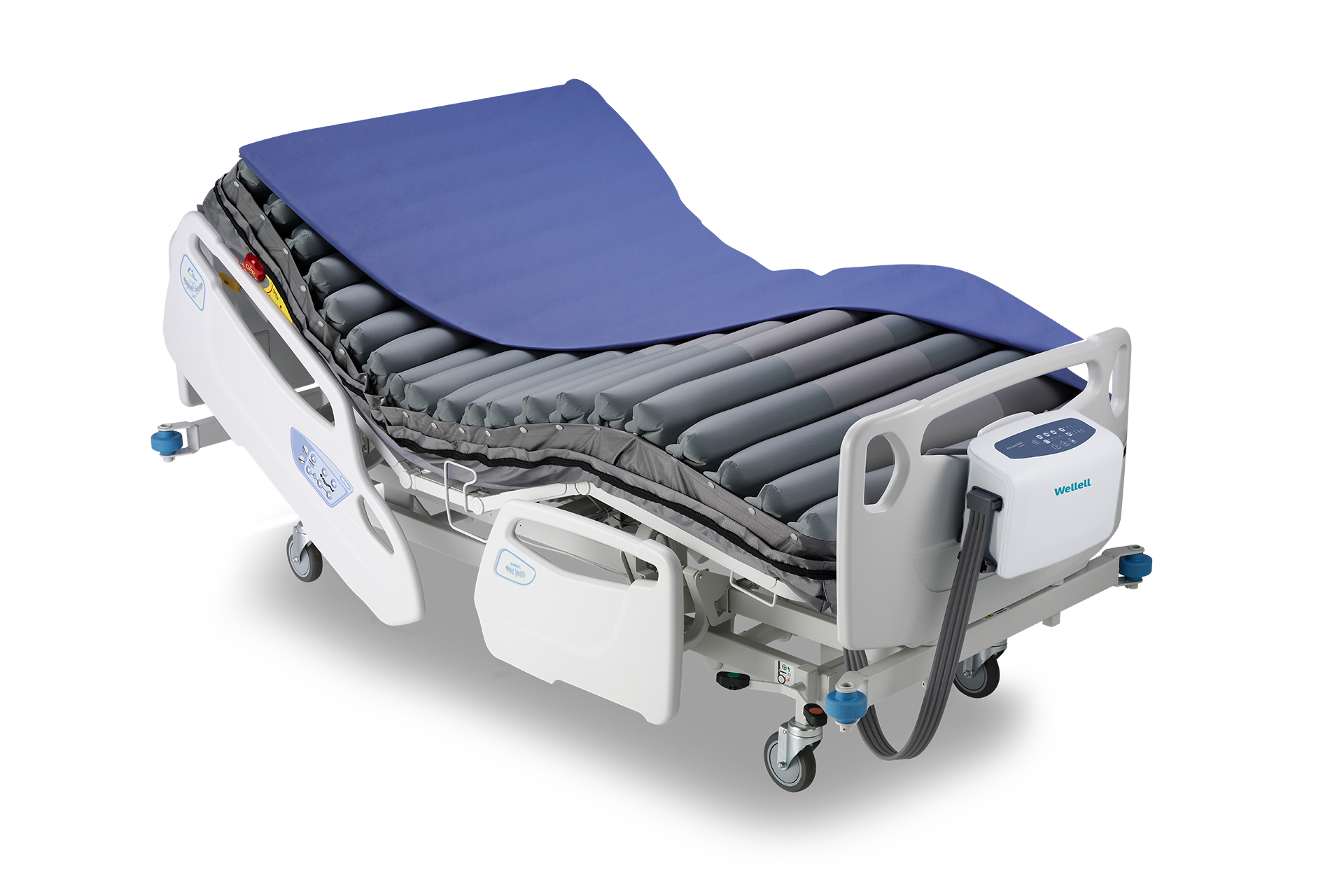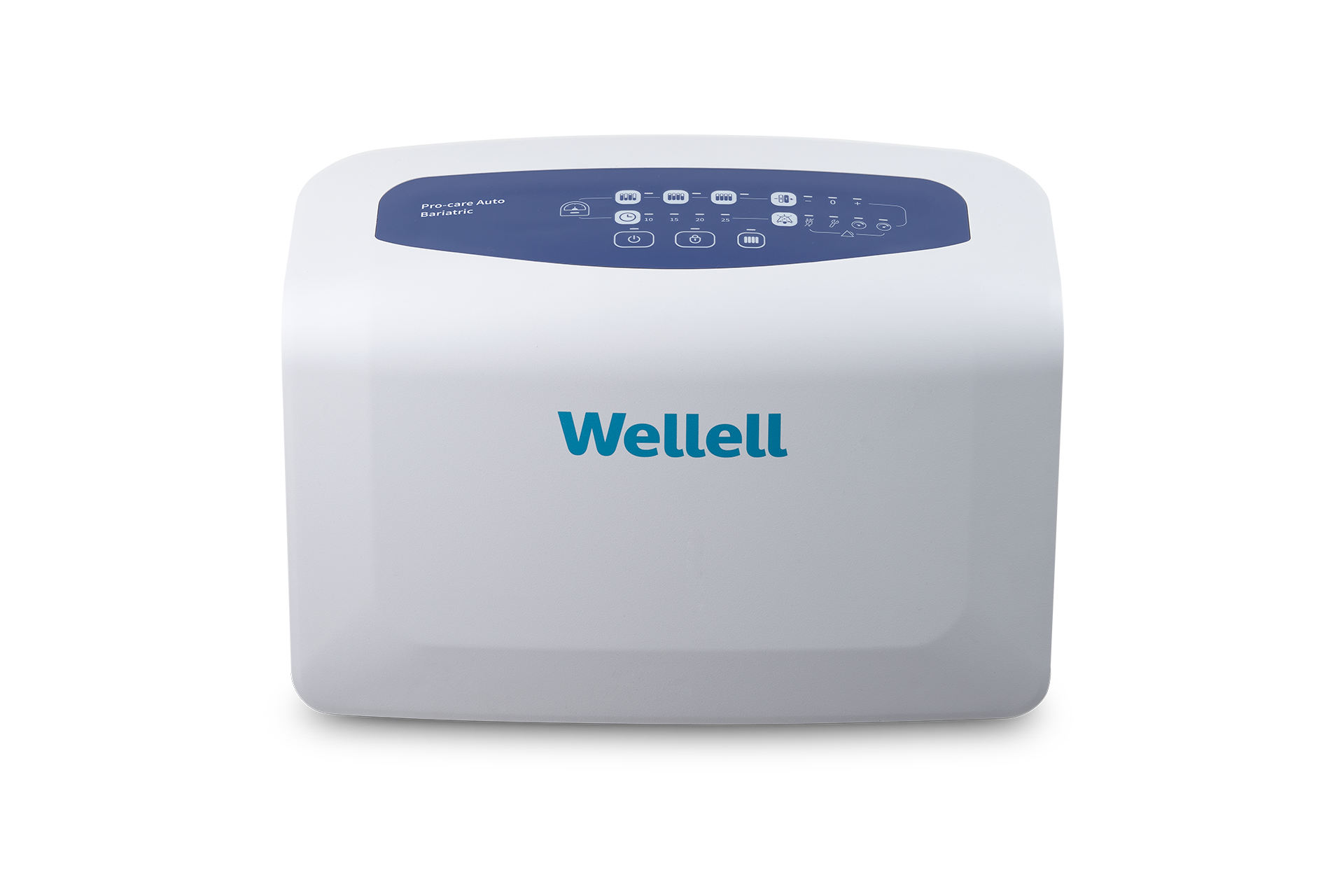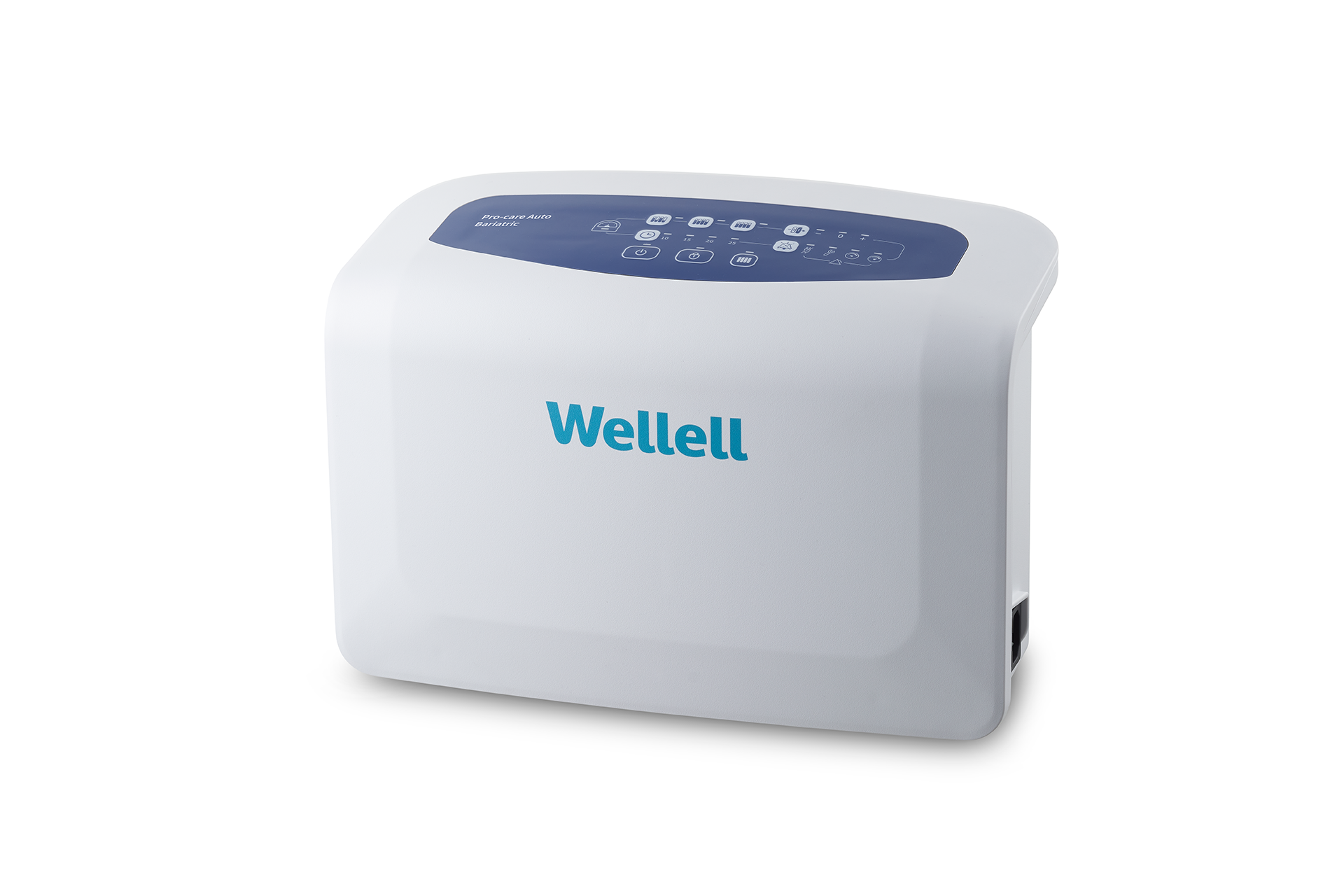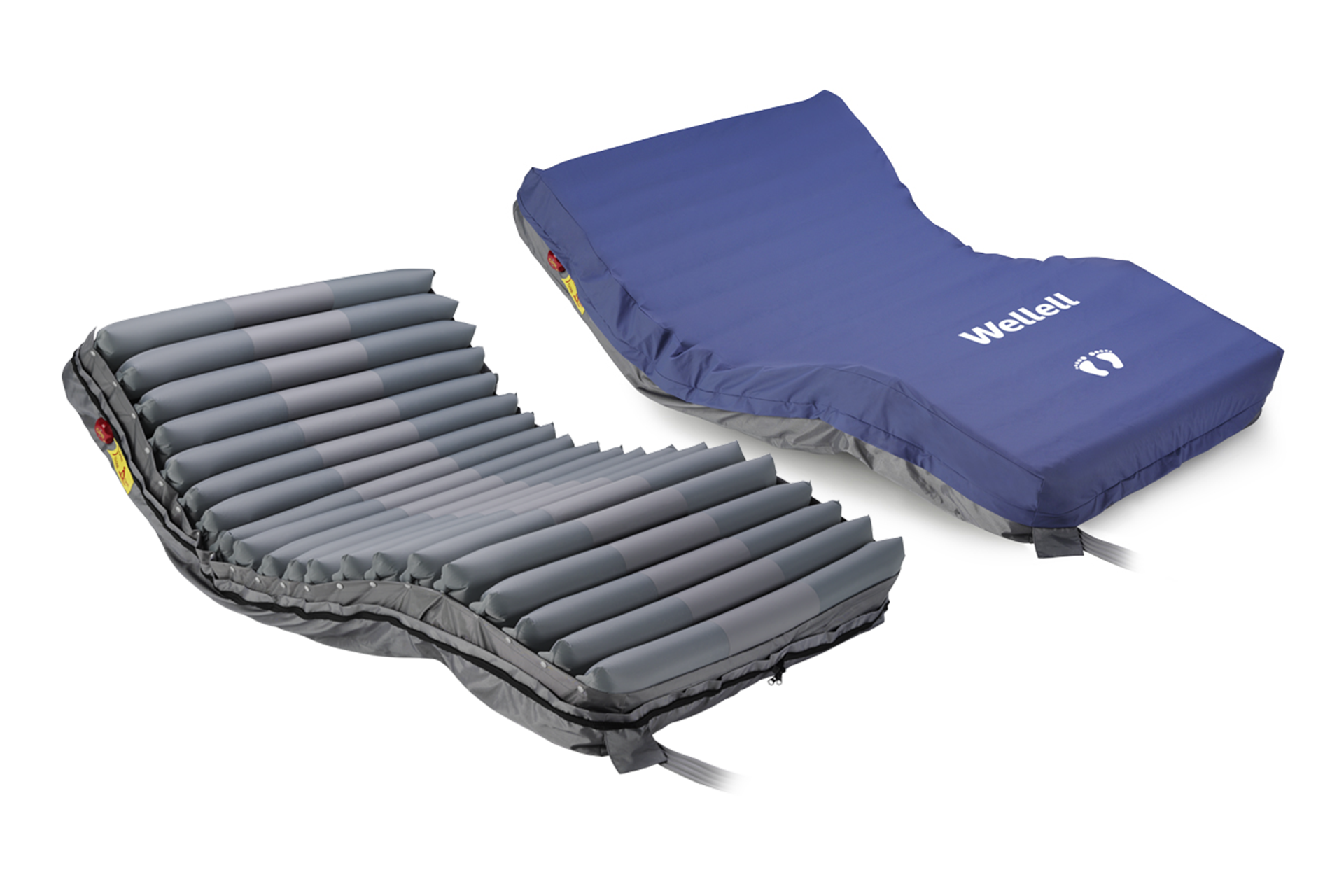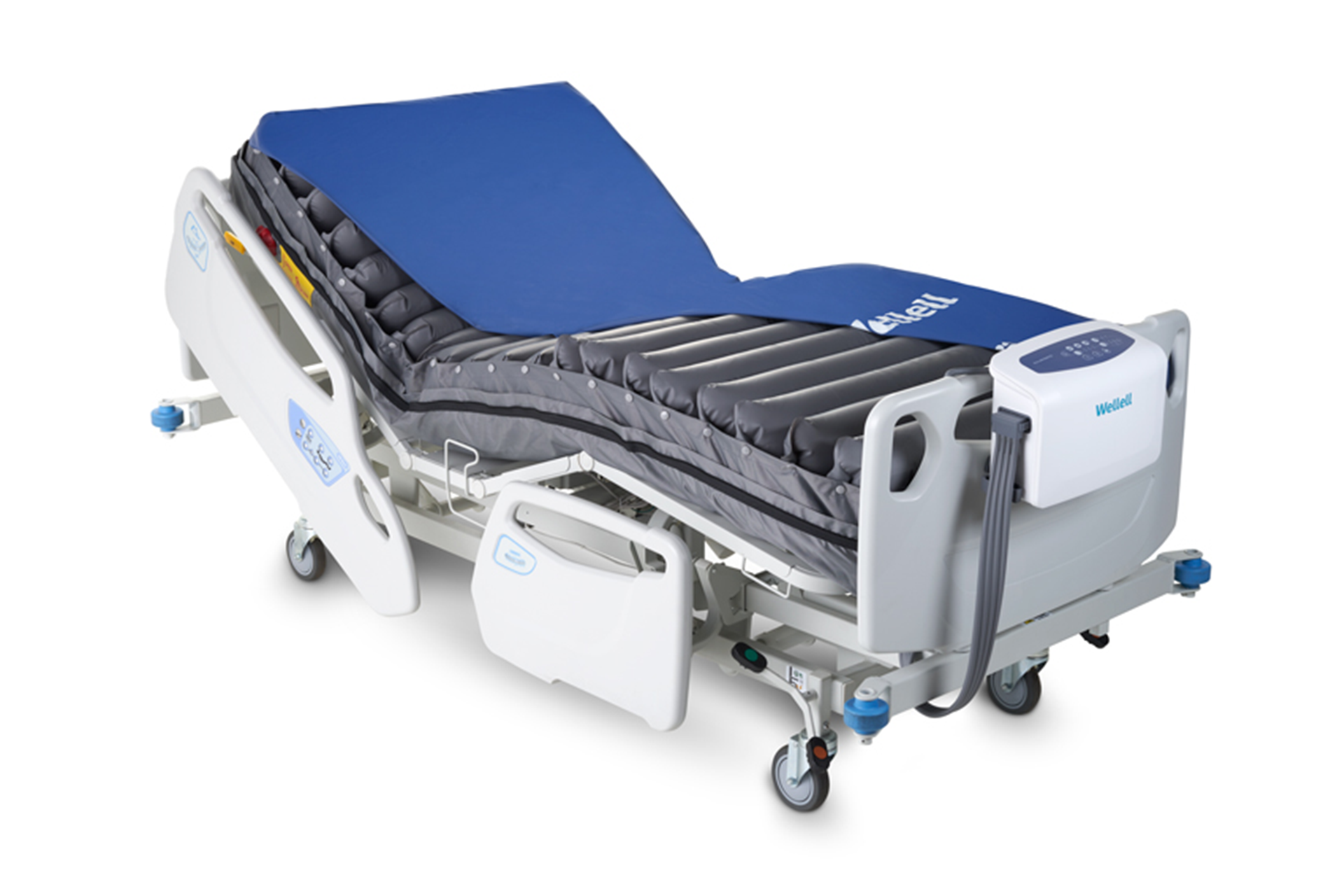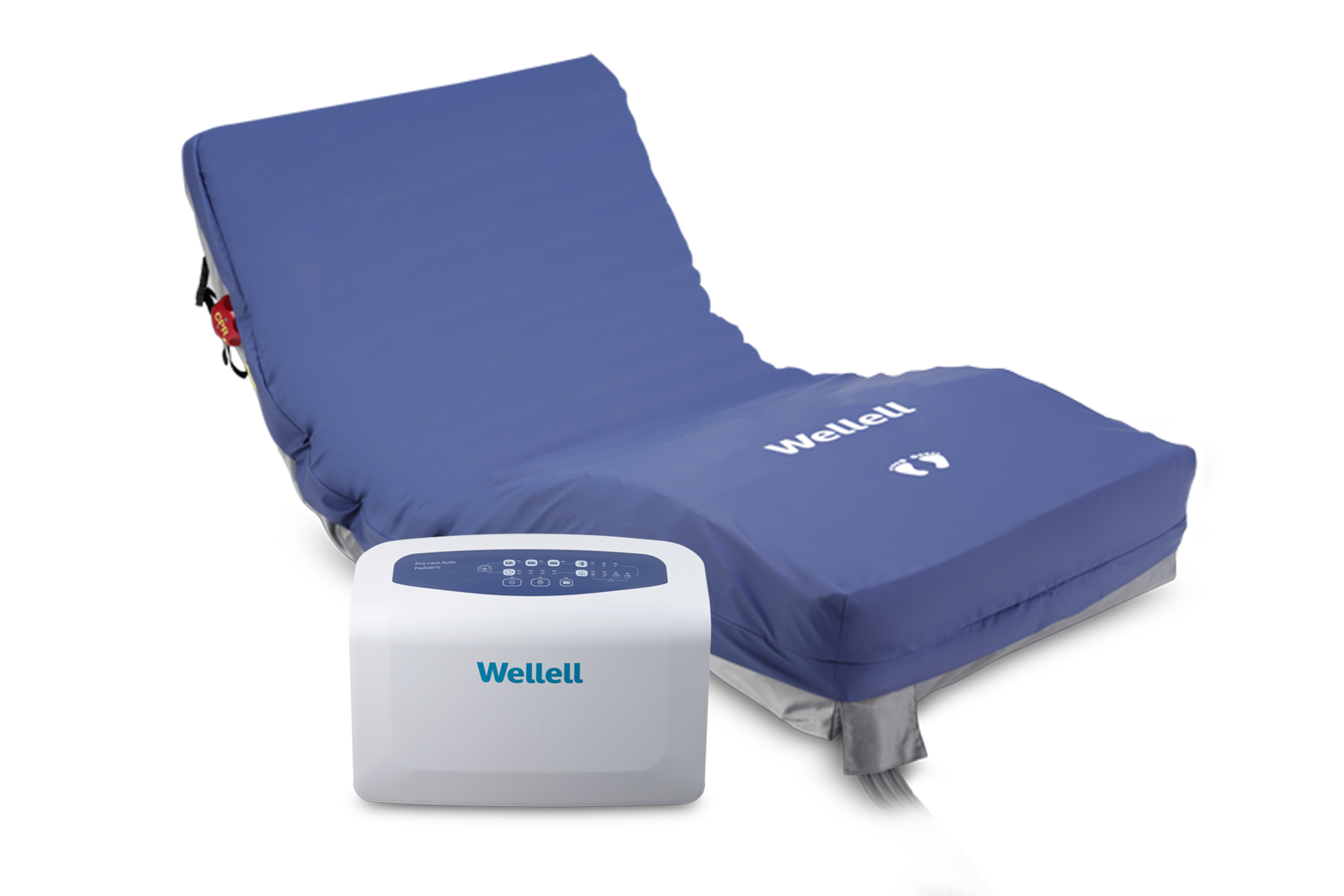Pro-care Auto Bariatric
Pressure Relief Mattress for Hospital BedFor High to Very High Risk
Design for Bariatric Pressure Injury Prevention — Improving caregivers' workflow and handling injury risks.
Abbreviations: PI, pressure injury.
26% of obese patients (BMI over 40 kg/m2) develop PI, double their non-obese counterparts, due to significantly more complex and labor-intensive care. Large, heavy skin folds apply intense pressure on the tissue beneath, causing tissue damage and cell death if left untreated.1,2
Lifting 1.8 tons per 8-hour shift injures 46% of the global nursing workforce on-the-job, with 40% as back injuries. Obese patients have a higher mortality rate, risk of complications, resource usage, hospitalization period, and cost. Caring for obese patients is a fear for the nursing staff.4-6
Pro-care Auto Bariatric improves caregivers' workflow efficiency, accuracy, and handling injury risks for overweight and obese bariatric care by automating mattress firmness for optimal pressure relief and preventing bottom out during sitting with structurally enhanced air cell design.

Maintain high-quality care for bariatric patients
- Suitable for improving pressure injury prevention in in-hospital and care facility bariatric patients.
- Larger and more tightly packed air cells enhance comfort and stability to support larger bodies.
- Additional air cells under pressure-setting-controllable air cells maintain sufficient firmness to prevent patients from bottoming out.
- Dual compressors system silently and continuously care for patients.
- Support surface width: 120 cm.
- Maximum patient weight: 450 kg/992 lbs.
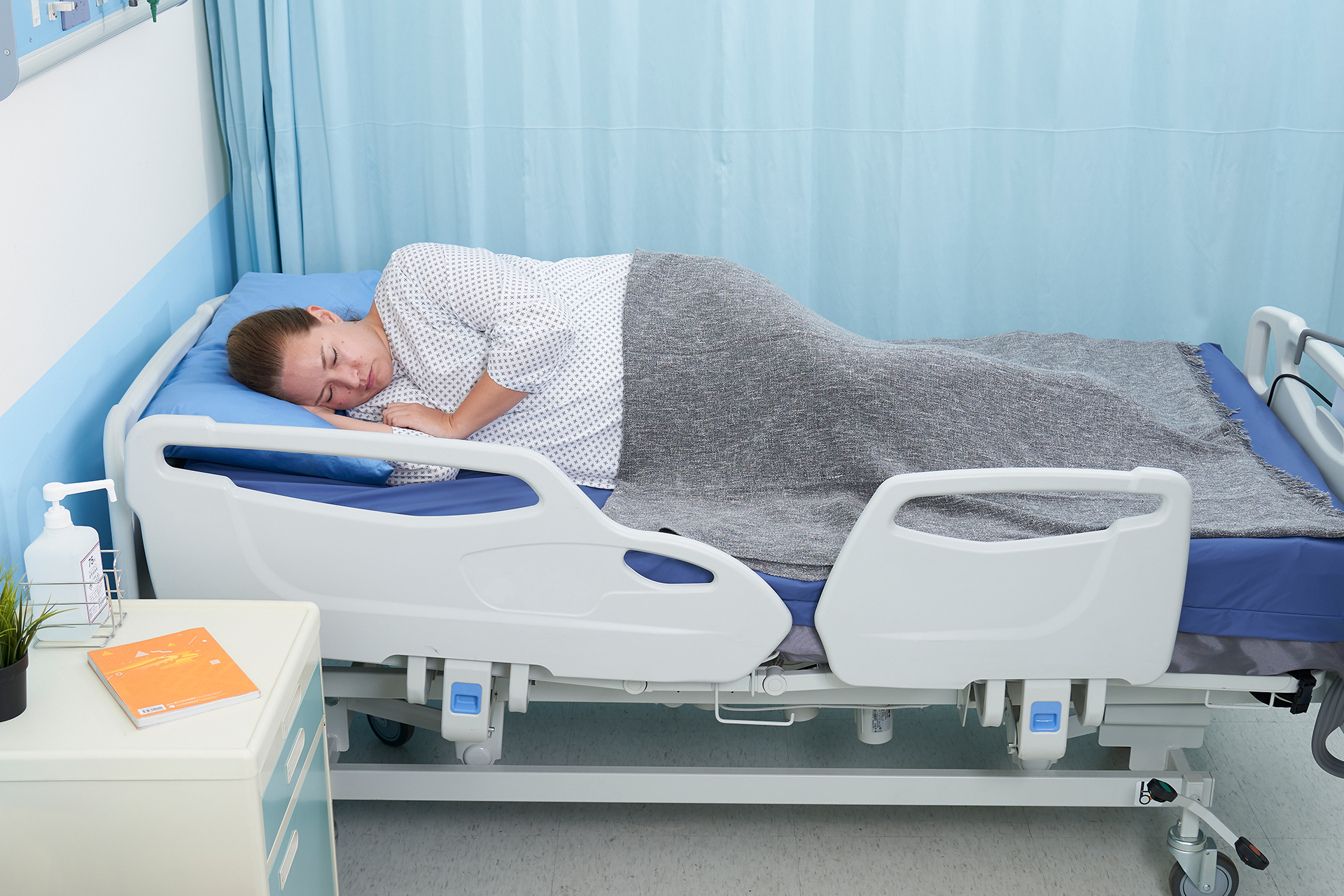
Auto-adjustment simplifies care delivery by optimizing mattress firmness according to the patient's weight.
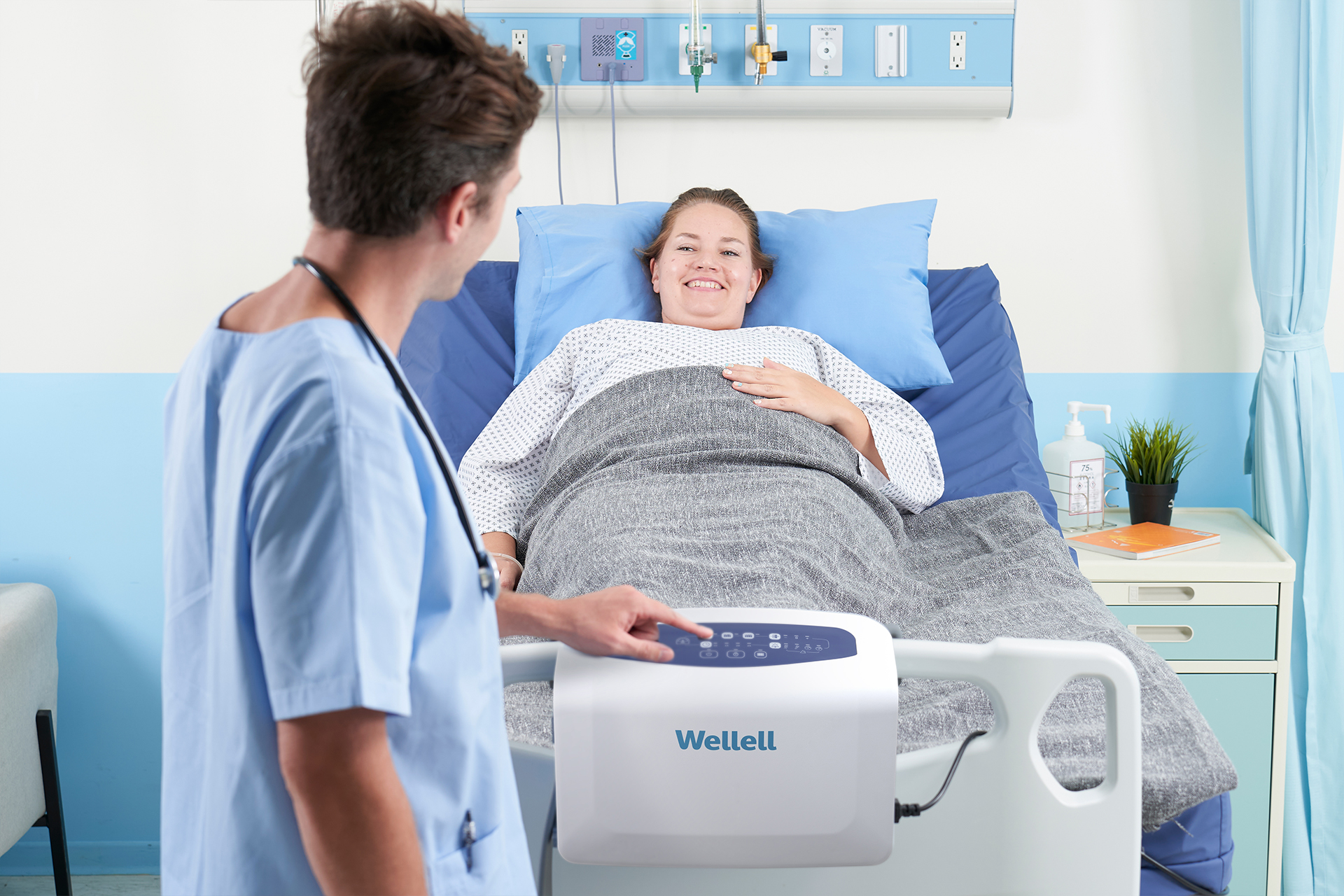
Wider, sturdier mattress improves pressure redistribution coverage and injury risks. Width: 120 cm.
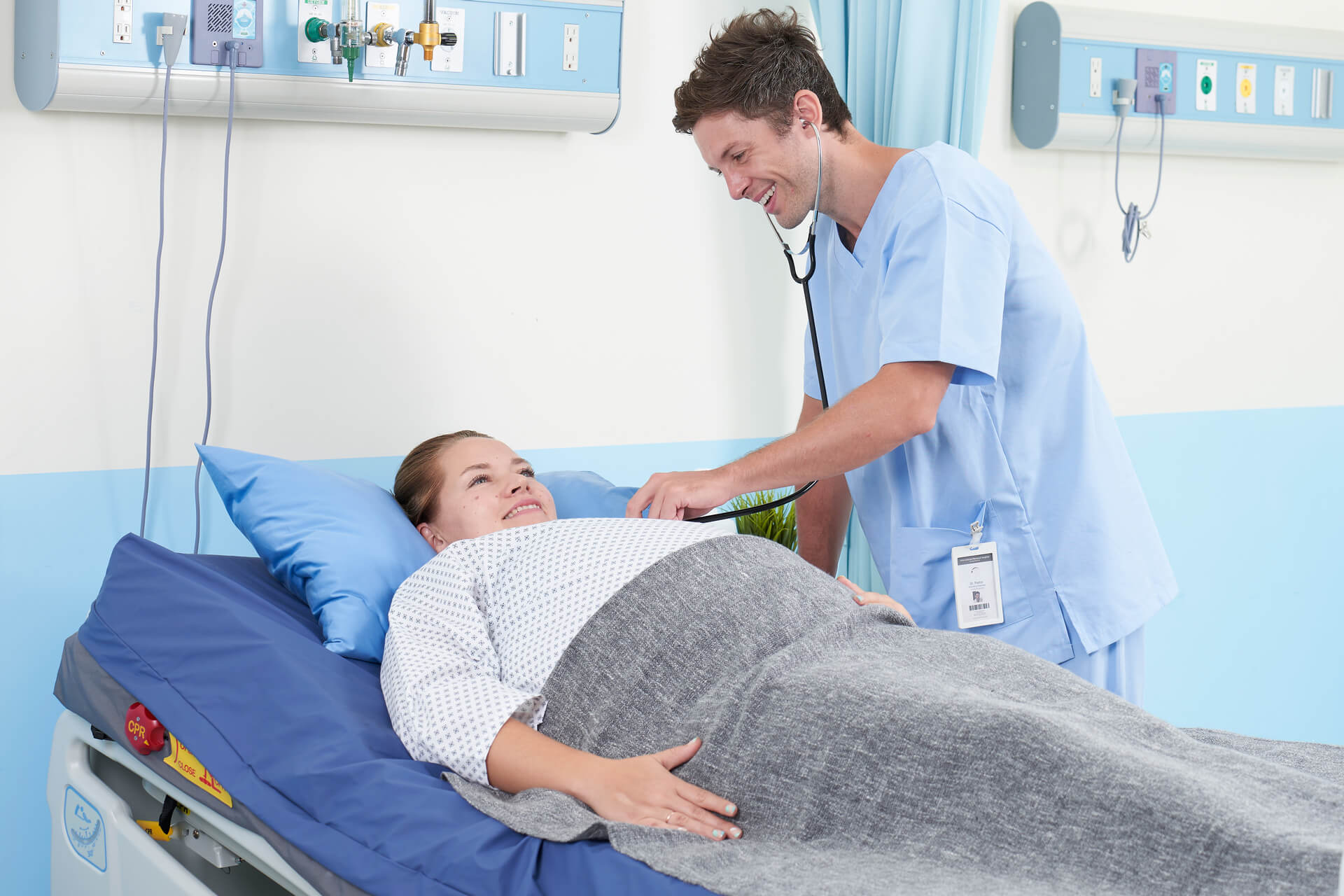
Micro low air loss wicks moisture from patients' skin and improves skin microclimate control.
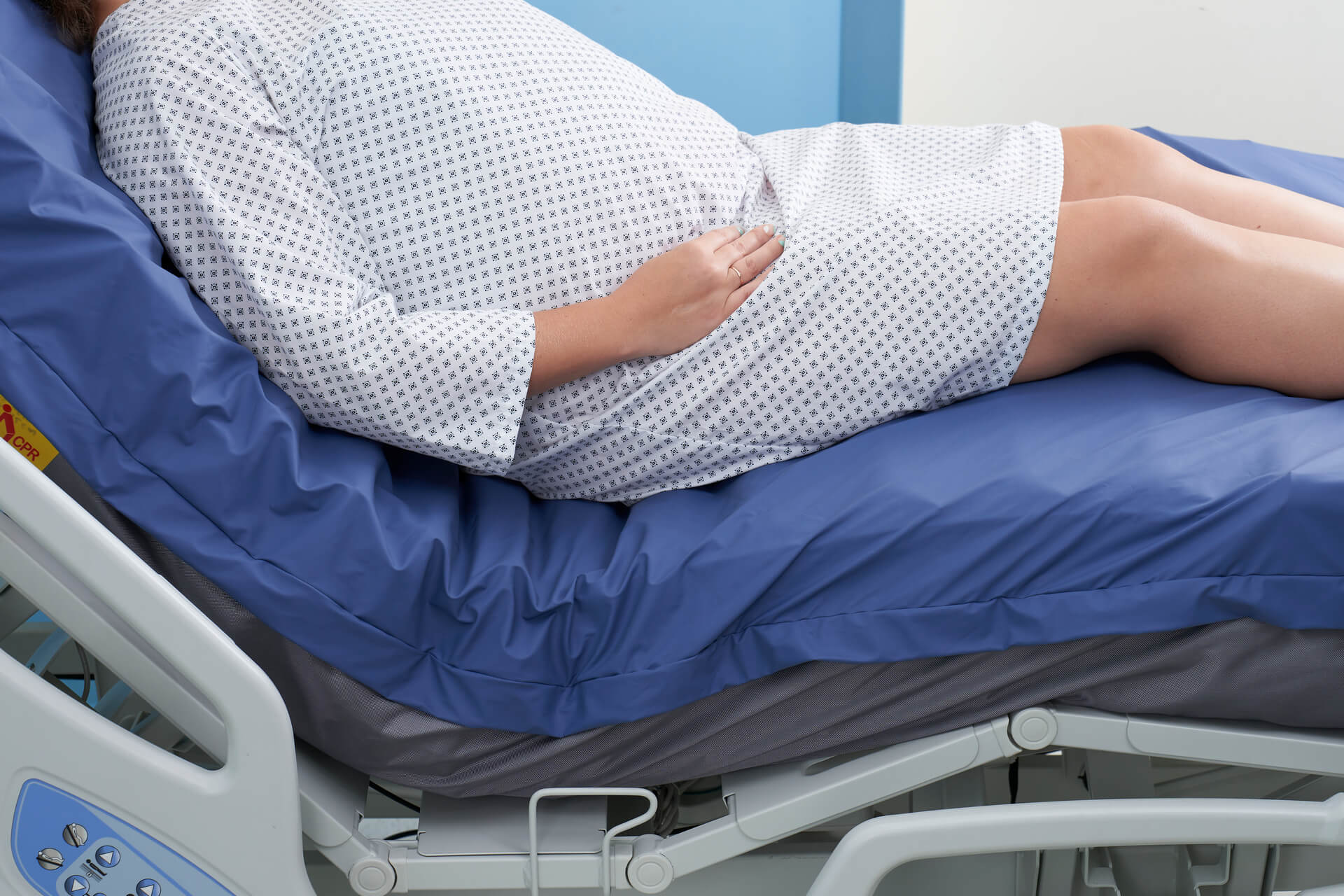
Structurally reinforced air cells in the torso section provide support and comfort during sitting.
| Pro-care Auto Bariatric | ||
|---|---|---|
| Mattress Dimension (L x W x H ) | 78.7 x 42.1-48 x 8 in | 2000 x 1070-1220 x 203 mm |
| Mattress Weight | 28.6 lb | 13 kg |
| Maximum Patient Weight | 990 lb | 450 kg |
| Pump Dimension (L x W x H ) | 13.4 x 5.3 x 8.1 in | 340 x 135 x 205 mm |
| Supply Voltage | 220-240 V / 50-60 Hz |
|

Maintain high-quality care for bariatric patients
- Suitable for improving pressure injury prevention in in-hospital and care facility bariatric patients.
- Larger and more tightly packed air cells enhance comfort and stability to support larger bodies.
- Additional air cells under pressure-setting-controllable air cells maintain sufficient firmness to prevent patients from bottoming out.
- Dual compressors system silently and continuously care for patients.
- Support surface width: 120 cm.
- Maximum patient weight: 450 kg/992 lbs.

Auto-adjustment simplifies care delivery by optimizing mattress firmness according to the patient's weight.

Wider, sturdier mattress improves pressure redistribution coverage and injury risks. Width: 120 cm.

Micro low air loss wicks moisture from patients' skin and improves skin microclimate control.

Structurally reinforced air cells in the torso section provide support and comfort during sitting.
All air cells are made from Thermoplastic Polyurethanes (TPU). It is highly resistant to breaking down when in contact with water (hydrolysis), soft to touch, and minimizes friction and noise during patient movements.
The cover is made with nylon/PU and is vapor permeable, fire-resistant, and water-resistant. See specifications for more details on the fire-retardant standards.
Reference
- CLWK: Connecting Learners with Knowledge. (2018, February). Guideline: Prevention of Pressure Injury in Adults & Children. CLWK: Connecting Learners with Knowledge. https://www.clwk.ca/get resource/prevention-of-pressure-injury
- Kennedy-Evans, K. L. (2015, February 17). Bariatric (Obese) Individuals - National Pressure Ulcer Advisory. https://doczz.net/doc/7776859/bariatric--obese--individuals---national-pressure-ulcer-a...
- Choi, S. D., & Brings, K. (2016). Work-related musculoskeletal risks associated with nurses and nursing assistants handling overweight and obese patients: A literature review. Work, 53(2), 439-448.
- McClean, K., Cross, M., & Reed, S. (2021). Risks to healthcare organizations and staff who manage obese (Bariatric) patients and use of obesity data to mitigate risks: a Literature Review. Journal of Multidisciplinary Healthcare, 577-588.
- De Jong, A., Verzilli, D., Sebbane, M., Monnin, M., Belafia, F., Cisse, M., ... & Jaber, S. (2018). Medical versus surgical ICU obese patient outcome: a propensity-matched analysis to resolve clinical trial controversies. Critical care medicine, 46(4), e294-e301.
- Rosvall, B. R., Forgie, K., MacLeod, J. B., Yip, A. M., Aguiar, C., Lutchmedial, S., ... & Hassan, A. (2017). Impact of obesity on intensive care unit resource utilization after cardiac operations. The Annals of thoracic surgery, 104(6), 2009-2015.

